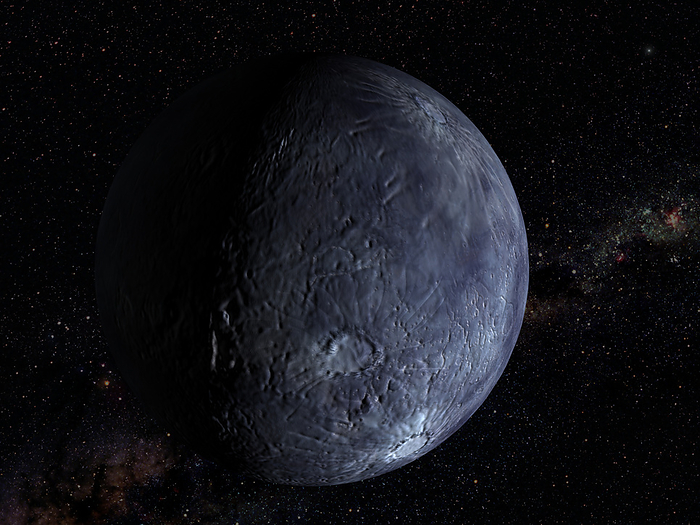
RM
Quaoar, illustration
Illustration of Quaoar (pronounced kwa-whar). It was discovered by American astronomers Chad Trujillo and Michael Brown on 4th June 2002 at the Palomar Observatory San Diego, USA. It was discovered by American astronomers Chad Trujillo and Michael Brown on 4th June 2002 at the Palomar Observatory, San Diego, USA. This dwarf planet is located 6.5 billion kilometers away from Earth in the Kuiper Belt, an icy debris field beyond Neptune containing small comet-like bodies. Researchers suspect it is composed mostly of low-density ices and rock, similar to a comet. This would indicate that the temperature rose to at least -160 degrees Celsius (C) sometime in the last ten million years, from its natural temperature of -220 degrees C. The more widely accepted theory is that cryovolcanism occurred The more widely accepted theory is that cryovolcanism occurred as a result of the decay of radioactive elements within the Quaoar鈥檚 core. by NASA/ESA/G. Bacon/STScI/SCIENCE PHOTO LIBRARY

More
Top Categories
